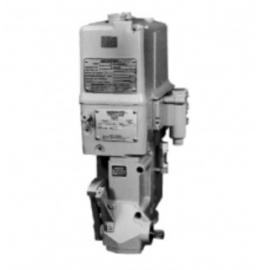PGG
Sets speed/power output from a remote location
Applications
The PGG is used for controlling speed or power output of engines where remote speed-setting capabilities with droop are required. It is especially useful in parallel generator-set applications where alternator frequencies must be matched, or the governor operated in droop mode for load distribution.
PGG governors are available with any of the PG output systems. Output ranges from 16 to 678 N*m (12 to 500 lb-ft) maximum work capacity, depending on the governor operating pressure and the output option selected. Most outputs provide 30 degrees of rotary travel. One inch (25 mm) of linear travel is also available.
The PGG governor is designed to operate the engine within a steady-state speed band of ±0.25% of rated speed. Special ballhead assemblies and pilot-valve porting options are available to match difficult control problems.
PG limiters to reduce smoke and enhance load change ability are available with PGG governors. Lube oil pressure and water pressure alarm and shutdown are also available. Oil heat exchangers allow PGG governor use in installations with extreme ambient temperatures.
Description
The PGG is a mechanical-hydraulic, pressure-compensated governor that combines a permanent-magnet, speed-setting motor for accurate remote speed adjustment with speed-droop adjustment and load-limit control features. Manual speed setting at the governor is also provided. Pressure-actuated or electric-solenoid shutdown is available in addition to other PG auxiliary devices.
The governor has a self-contained oil supply. The integral oil pump is driven by the governor drive shaft. PGG governors are available for clockwise, counterclockwise, or reversible governor drives. Oil pressure is maintained by a relief valve and accumulators. Oil flow to and from the governor power cylinder is controlled by a centrifugal flyweight and pilot-valve plunger assembly. The power cylinder is mechanically linked to, and positions, the fuel racks or valve.
Adjustable load limit sets the maximum fuel position. The adjustment may be used to shutdown the engine or to otherwise limit the maximum fuel to the engine.

